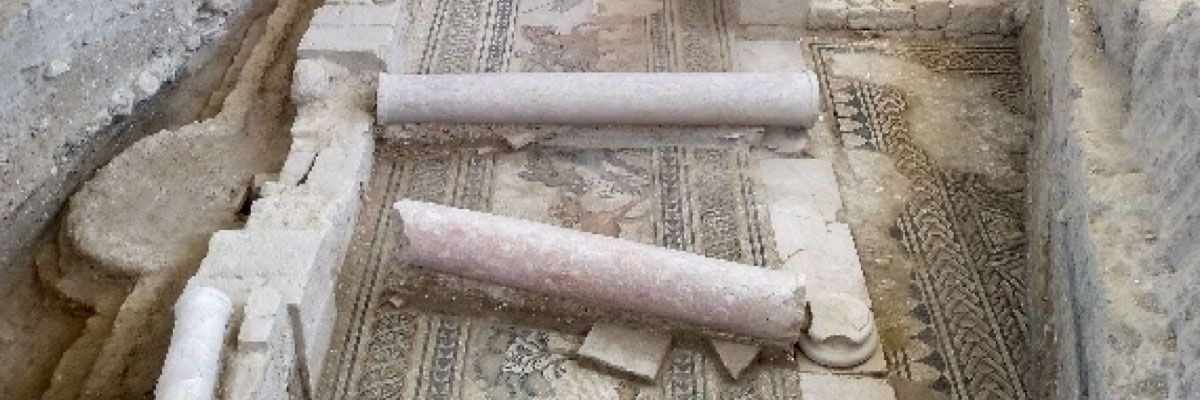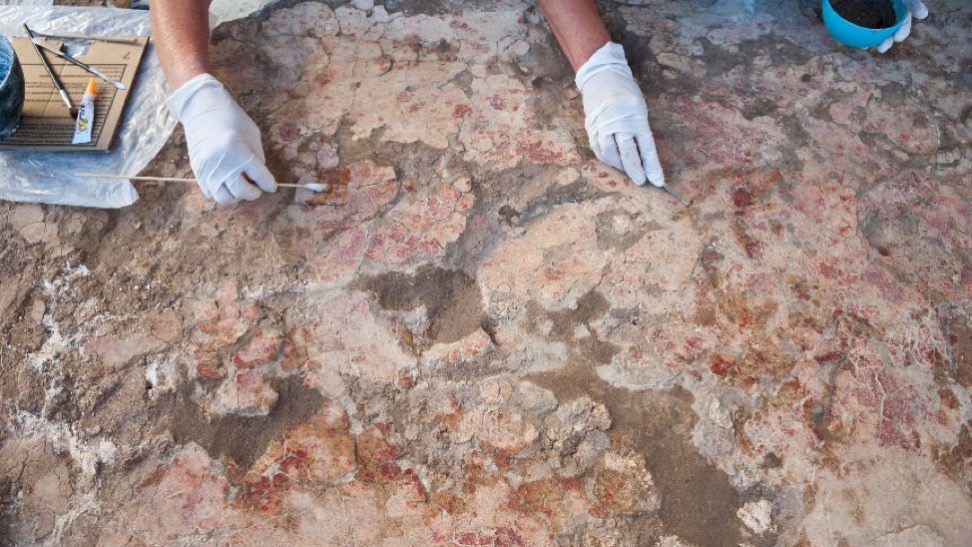
Research, conservation and enhancement of the Roman villa of Salar (Granada)
The Roman villa of Salar is currently one of the most important recent findings from the Roman period in the whole of the Iberian Peninsula. The good conservation of its structures, and the spectacular nature of the same (highlighting, among all, its polychrome mosaic figures) place it among the best Roman villas in all of Hispania, and comparable to any of those that flooded the entire Roman Empire. The small percentage of its total dimensions that have been excavated so far, and its construction elements of great singularity, and even exclusive to this one (and that means, not identified in the whole Roman world until today), make the Roman villa of Salar a monumental complex with an enormous archaeological and historical potential.

Period
Roman and Late Antique Periods (I to VI centuries)
Institution
Universidad de Granada-Salar City Council
Web and social networks
https://www.facebook.com/pgivillaromanadesalar
https://www.aytovillaromanadesalar.es/es/
https://www.facebook.com/villaromanasalar
https://twitter.com/villasalar
https://www.instagram.com/villaromanasalar/
Period
Roman and Late Antique Periods (I to VI centuries)
Institution
Universidad de Granada-Salar City Council
Web and social networks
https://www.facebook.com/pgivillaromanadesalar
https://www.aytovillaromanadesalar.es/es/
https://www.facebook.com/villaromanasalar
https://twitter.com/villasalar
https://www.instagram.com/villaromanasalar/
Principal Investigator(s)
Dr. Julio Miguel Román Punzón
Universidad de Granada
Location
Roman Villa of Salar, Granada
LOCATION
RESULTS
From a social and cultural point of view, the Salar Town Council’s firm commitment to research, conservation, museumization and dissemination of this heritage asset has had rapid consequences for this small, once-unknown town: in just four years, it has become a benchmark, not only at regional and provincial level, but also at regional level, for good heritage practices, and a clear example of how investment in this heritage is invested in the short term and multiplied in the town that plays a leading role in it, on an economic, social and cultural level.
The spectacular and unique structures of the Roman villa of Salar make it an exceptional archaeological site for historical research in the Roman Betica province. However, being this aspect important, it is not less important the social and participative aspect with which we conceive the Archaeology in this team, which comes from my own formation and belonging to the Laboratory of Biocultural Archaeology-MEMOLab of the University of Granada, to which this project is associated, as well as to the Department of Prehistory and Archaeology of the above mentioned academic institution.
Indeed, we understand that archaeology has the duty to return to society the investment made in its research, and this should be done through various dissemination and outreach activities. The socialization of archaeology involves generating lines and contents of a formative and pedagogical nature, with languages adapted to all social segments; as has already been pointed out, it is essential to combine didactic activities and citizen participation, fostering the relationship between the population and the heritage. In this case, it is fundamental to implement a procedure for the recognition of heritage values in the construction of the community’s cultural identity.
However, as this aspect is important, we believe that it is not less important, and this also makes our project very unique, the great effort of its professionals and collaborators to convert the research of a heritage asset into a source of sustainable development both for Salar and its region, understanding this not only in its economic concept, but also in its cultural and social one. And the results obtained in this socio-cultural aspect of the heritage are what we are most proud of, as they clearly show that investment in this type of asset is profitable, even in the short term, and becomes in the town and its surroundings an improvement in the quality of life of its inhabitants, both real and perceived, as well as an excellent tool for facing up to the sad reality of empty Spain, of which so many rural and inland municipalities in our autonomous community form part.
Thus, in Salar an immediate social profitability is being generated, in the form of an increase in the perception of the quality of life of the citizens, who assume this patrimonial property, not only as an identity and cultural reference of Salar and the Salareños, but as an alternative for its precarious economic fabric, which can now be based on a sustainable and quality tourism. In this way, and in a very few years, this investment is shown to be not only socially amortized, but also economically profitable.
Salar’s future, together with its historical and archaeological heritage, is looking much better than it did just four years ago.
PICTURES
- Ancient DNA Reveals Missing Link in the Origins of Indo-European Languages Spoken by 40% of the World (Arkeonews 06/02/2025) - 6 February, 2025
- 2,500-year-old caravan tombs discovered in the Negev (Heritage Daily 05/02/2025) - 6 February, 2025
- Did Paleolithic People Wear Cheek Piercings? (Archaeology Magazine 04/02/2025) - 5 February, 2025

























